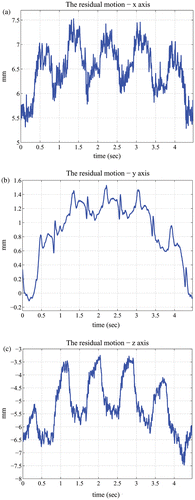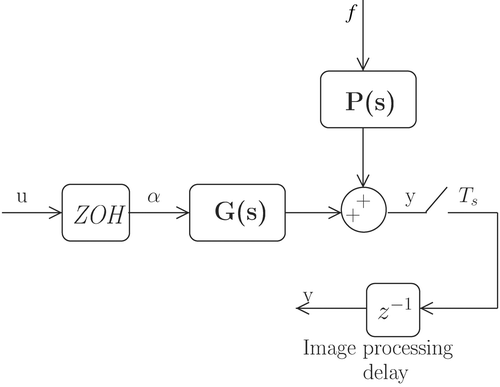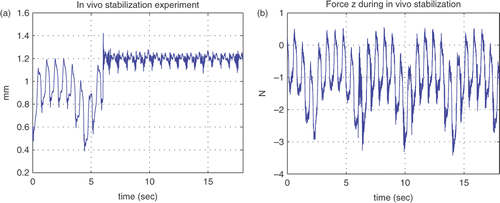Figures & data
Figure 1. The setup with the Octopus TE and a close-up on the distal device. [Color version available online.]
![Figure 1. The setup with the Octopus TE and a close-up on the distal device. [Color version available online.]](/cms/asset/e346721a-036c-4a87-a87b-1fe701bdf801/icsu_a_341480_f0001_b.gif)
Figure 3. The experimental setup with the custom stabilizer and a close-up on the distal device. [Color version available online.]
![Figure 3. The experimental setup with the custom stabilizer and a close-up on the distal device. [Color version available online.]](/cms/asset/d8912f40-02d5-4b21-b1de-242275824ebf/icsu_a_341480_f0003_b.gif)
Table I. Peak-to-peak force and torque values.
Figure 5. Spectral analysis of the heart force. (A) and (B) are the peaks corresponding to the respiratory and cardiac fundamental frequencies, respectively.

Figure 6. Correlation of the heart contact force with the ECG signal. [Color version available online.]
![Figure 6. Correlation of the heart contact force with the ECG signal. [Color version available online.]](/cms/asset/e6ef67ad-bdc4-443d-87c6-41fd26ff3b41/icsu_a_341480_f0006_b.gif)
Figure 8. The organization of the operating room when an active stabilizer is used. [Color version available online.]
![Figure 8. The organization of the operating room when an active stabilizer is used. [Color version available online.]](/cms/asset/f32297ea-84d7-4c4c-8255-edbc0b1e8aa9/icsu_a_341480_f0008_b.gif)
Figure 9. (a) The current prototype of the active stabilizer – a CAD global view. (b) Detail of the closed-loop mechanism on the current prototype. [Color version available online.]
![Figure 9. (a) The current prototype of the active stabilizer – a CAD global view. (b) Detail of the closed-loop mechanism on the current prototype. [Color version available online.]](/cms/asset/758eab7d-0f60-4b91-8237-ad43704ca3e3/icsu_a_341480_f0009_b.gif)
Figure 10. A finite element analysis of the compensation. The actuator controls the horizontal position of point A. Displacements are magnified for the sake of clarity. [Color version available online.]
![Figure 10. A finite element analysis of the compensation. The actuator controls the horizontal position of point A. Displacements are magnified for the sake of clarity. [Color version available online.]](/cms/asset/7a909204-49ab-430a-9381-342a39dd7caf/icsu_a_341480_f0010_b.gif)


![Figure 7. The heart residual motion with and without ventilation. [Color version available online.]](/cms/asset/be129fb8-04e4-4b0d-82a8-bc32a35d4013/icsu_a_341480_f0007_b.gif)

![Figure 12. The Cardiolock device during an experimental validation. [Color version available online.]](/cms/asset/b84a00b9-a2ab-4df0-aa62-2cbe3d353d4f/icsu_a_341480_f0012_b.gif)
